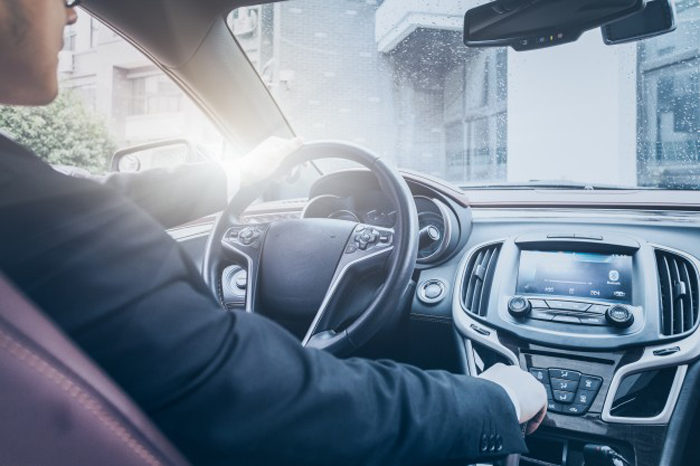Thankfully, your driving habits have nothing to do with determining your premium. But it is past now, as soon it becomes a key component in choosing your car insurance premium. Yes, you’ve heard it right. As per the latest announcement made by IRDA, a major change is being escorted in the form of a device called ‘telematics’, which is to track your driving habit and skills. The motive behind this is to provide an input to insurance companies while determining the premium to be indicted on car insurance. This benefits people with good driving skills to avail insurance at reduced premium rate at the time of policy renewal.
What is ‘Telematics’IJ
Being the talk of the town these days, Telematics is a GPS-enabled box, fixed inside the cars to track the vehicle speed, covered distance, location, travel time, acceleration etc. The vehicle owner can also access the information provided by the device to ensure the driver is driving the car properly or not. This way, one can maintain a good driving habit or make changes in their driving pattern. An exposure draft from IRDA for the same has been published, asking for comments on the process.
This integrated device that sends and receives signals via GPS is a blend of telecommunication and information and communication technology. By using this device, insurers can calculate the premium on the basis of the information provided on actual wear & tear, usage, distance covered, driver skills, etc.
How does it functionIJ
The functionofthis device is regulated via a similar mechanism, as the data is collected through the device and passed onto the insurance companies’ warehouses via the app. Further, this raw data is being processed, smoothened and cleaned, and then used for determining the premium price, data analytics, and claims management. However, in some countries, due to infancy, challenges are there in terms of not having enough experience of claims and the high association between variables captured by this electronic device.
Some of the foreign countries, including the USA, UK, Italy, Spain, Canada, Netherlands, etc. have been using this device for long to keep an eye on individuals’ driving skills and determine insurance premiums. However, the interest level may vary country to country regarding adoption of this device. The potential saving rates on premium have made this alluring, which can go as high as 30% to 40%, where premium rates are high. Well, the overall driver’s score is different, depending on the insurers’ choice and slab decided by a particular insurer. Here is why the rules that are followed in foreign countries may not work in India, owing to roads and infrastructure.
Usefulness of ‘Telematics’
Reduction in Premium: The concerned and careful drivers can earn a premium discount by using the device. A safe driver with less covered distance drives primarily during off-peak hours. With Telematics, your driving performance will be directly visible to the insurer, which further determines the car insurance premium.
Provides Safety: This device could be helpful in retrieving your stolen vehicle. This also guides the drives about well-maintained routes and helps the car owner save on fuel and car maintenance cost.
Helps Insurers Assess the Risk: Telematics helps insurance companies estimate risk factor more accurately. By enabling the insurers to analyse driving data, including speed, time, and hard braking, it reduces the chances of any fraud to happen during a claim against accidental damages.
On-time Notifications: By using this, the car owners can maintain the life of the vehicle. It sends constant notifications regarding changing the brake oil if the vehicle needs servicing etc. These are the regular maintenance tricks that every car owner maintains, but if there is an alarm about when the car actually needs it, that would be more beneficial. This way, one can restore the life of their vehicle.
Challenges it May Face
As nothing is always an easy victory, Telematics has its own share of challenges, mostly in developing countries where insurance premium rates are lower than that in the developed countries. lack of awareness, minimal penalty on violation of traffic norms, laws and device price are some of the challenges that top the list. While the black-box seems to be a difficult option, there are several other options suggested by insurance experts, such as smartphones with a unique mobile app that keeps an eye on your driving or car socket. Well, this is not in action now.
Again, the owner requires paying an additional amount over and above the insurer-calculated premium as a set-up cost of this device. This amount could range from Rs. 500 to 5000 depending on the requirement and technology that is being used to track your car. Also, an additional cost is also required to be paid as data charges to insert a SIM card inside telematics. However, the Indian insurance sector has not disclosed any specific price of this device yet.
In some countries, drivers install the device on their own and synchronize it with respective insurers’ apps, though a third-party installation is still available. The experts say the device should be pre-fitted in the vehicles to balance the level of penetration in the insurance market.
Conclusion
There is no final clarity on the exact implementation of above-mentioned changes, which further leads to the issue of potential portability. Difficulties may arise at the time of renewal if a Telematics user wants to change the current insurer. The new insurer could deny accepting the existing data on location, speed, time of use, braking etc. because different methods and rules for data collection may vary insurer to insurer or privacy regarding data sharing like what type of data can be shared or what cannot.
























